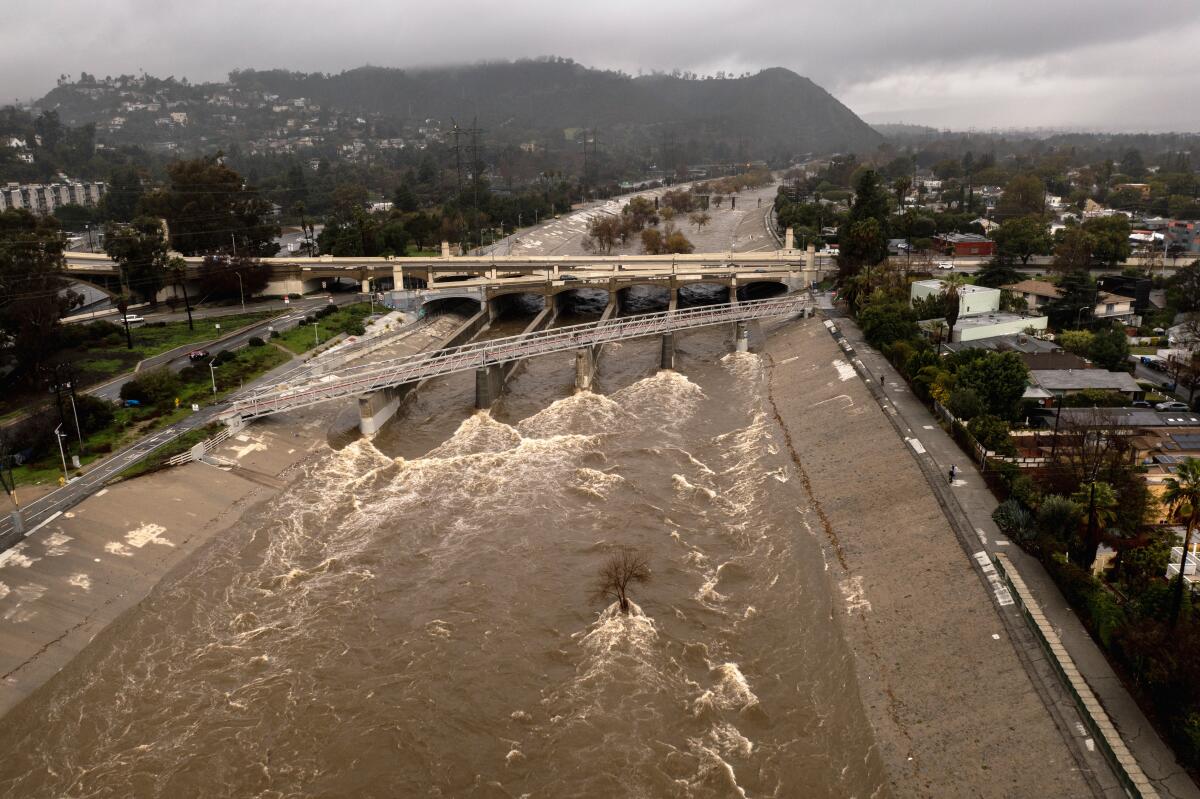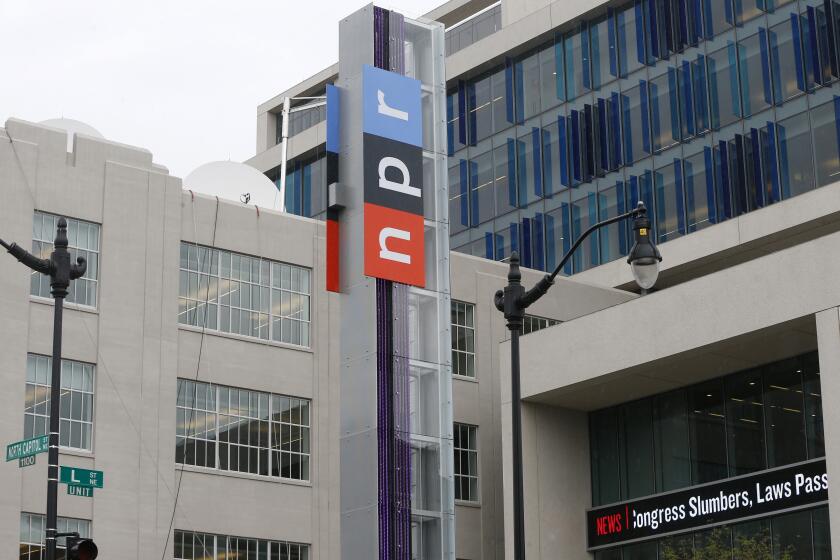Newsletter: California needs rain and snow — but can we handle this?

- Share via
Good morning. I’m Paul Thornton, and it is Saturday, Jan. 7, 2023. My apologies for being one of the last people to wish you a happy New Year, and welcome to our first newsletter of 2023. Let’s look back at the week in Opinion.
Right now, we in Southern California are enjoying a break from the storms across the state that have dumped record amounts of rain in major cities and buried mountains under several feet of snow. But in the Sacramento Valley, which along with other parts of Northern California is already in a state of emergency, the heavy rainfall will pick up again today, as it likely will in Los Angeles in the coming days, continuing a wet January that only weeks ago seemed a near-impossibility.
And it seemed that way only because of our short memories. As The Times Editorial Board reminded us this week, much of California was in a similar situation last January, when a series of cold, powerful storms turned our drainage canals into raging torrents and humble local mountains into alpine wonderlands. The drought wasn’t over then, says the board, and it isn’t over now.
This lurch from a balmy Christmas Day (the Dec. 25 high topped 80 degrees in Los Angeles) to a wet and frigid January may feel like a brief reprieve from climate change, which in California evokes wildfires and record-high temperatures. I felt that way watching the snow fall around at an old family cabin in Big Bear City, which sits high in the San Bernardino Mountains and had a mostly snowless winter in 2022. Predictions of a “no snow” California arriving within my lifetime distress me to no end, so seeing the white stuff fall in abundance brings relief.
But increasingly, the water that arrives as snow in our mountains will come as rain as the temperatures rise. Cities and farms and rivers that formed and evolved based on predictable snow-melt cycles will change dramatically or disappear. Climate change isn’t the end of precipitation in California; it’s exacerbating our already unpredictable feast-famine cycles, meaning longer famines and more intense feasting. And right now, California is engorged — as it was one year ago, just before it became starved for water again.
So the drought isn’t over — not even close. Act accordingly.
If the drought isn’t over, how can we make use of all this water? It’s not an easy question to answer, writes UC Santa Cruz hydrogeology professor Andrew Fisher. The state’s major dams and reservoirs are in the mountains rather than downstream, and water has to be released to make room for more from potential future storms. Also, it isn’t so easy to capture contaminated stormwater for use in landscaping or golf courses, since we’d have to build separate systems for storage and distribution. That leaves groundwater recharge, but it’s not as if we can inundate any flat area of land and hope the water will percolate into the ground. L.A. Times
Well, this is embarrassing. The House might have elected a speaker by the time you read this, but the fact that Rep. Kevin McCarthy couldn’t line up his votes in the two months between election day and Day 1 of the new Congress is a bad sign for the next two years of Republican leadership. Says The Times Editorial Board: “The dismal performance of several extreme Republican candidates in the midterms — not to mention the narrowness of the Republican majority in the House and the party’s failure to regain the Senate — should have led to a diminution of the power of the hard right. Instead that faction seems to be riding high.” L.A. Times
McCarthy’s speaker-election fiasco has been brewing in the GOP for years. Since the Obama presidency, Republican leaders have been pandering to the far-right fringe in an attempt to placate it. This happened with McCarthy’s 2015 bid for speaker, which the House Freedom Caucus torpedoed in favor of Rep. Paul Ryan. Former Republican strategist Kurt Bardella writes: “Is it any wonder that ... insurrection-loving extremists felt like they could successfully hold hostage a conference of 222? This has long been predictable. History has taught them that when push comes to shove, the Republican ‘leadership’ will always back down.” L.A. Times
Enjoying this newsletter? Consider subscribing to the Los Angeles Times
Your support helps us deliver the news that matters most. Become a subscriber.
L.A. should stop requiring developers to waste space on parking. Ever wonder why that modest church or bowling alley has a massive parking lot that seems empty most of the time? You can thank “parking minimums,” which are rules that require a builder to set aside space for parking spots based on some arbitrary standards. This doesn’t work for a city grappling with homelessness and housing crises, writes Streets for All founder Michael Schneider: “Sure, our ancestors in Los Angeles drove across town in 20 minutes and parked for free on both ends. That doesn’t make doing so a right now or in the future.” L.A. Times
Is there something about Americans that makes us football addicts? Violence is scripted into football like no other sport, a fact we were reminded of when Buffalo Bills safety Damar Hamlin collapsed on the field Monday after making what appeared to be a routine tackle. Does it then say something about Americans that football has taken hold in the U.S. like in no other country? “Perhaps this American affinity with militarism is what draws us to football and allows us to tolerate the violence embedded in the game,” writes Randall Balmer. L.A. Times
Stay in touch.
If you’ve made it this far, you’re the kind of reader who’d benefit from subscribing to our other newsletters and to The Times.
As always, you can share your feedback by emailing me at paul.thornton@latimes.com.
A cure for the common opinion
Get thought-provoking perspectives with our weekly newsletter.
You may occasionally receive promotional content from the Los Angeles Times.







